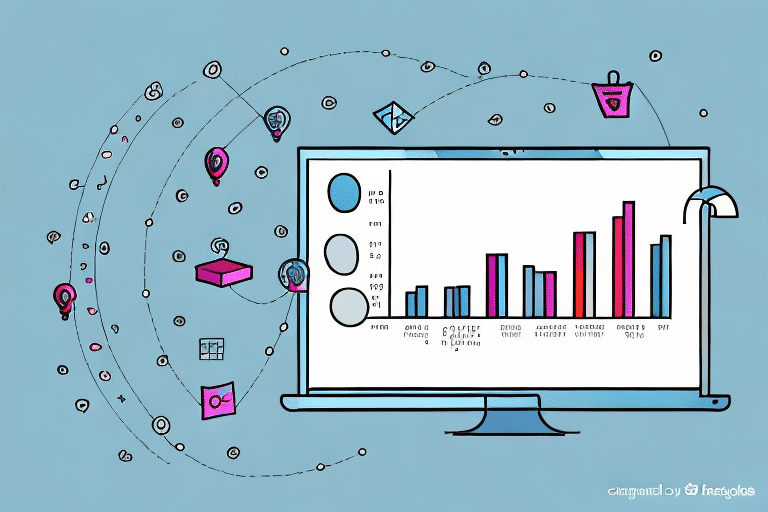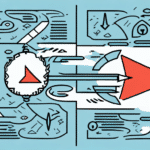The Importance of Customer Retention
Customer retention is a critical driver of business success, often proving more cost-effective than acquiring new customers. Research by the Harvard Business Review indicates that increasing customer retention rates by just 5% can boost profits by 25% to 95%. This significant impact underscores the necessity for businesses to prioritize strategies that foster long-term customer relationships.
Cost-Effectiveness of Retention vs. Acquisition
Acquiring new customers typically costs five times more than retaining existing ones. This disparity is due to expenses related to marketing, sales efforts, and onboarding processes required to attract and secure new clientele. Moreover, loyal customers tend to spend more over their lifetime, further enhancing profitability.
The High Cost of Losing Customers
Customer attrition, or churn, can severely impact a business's bottom line. Beyond the immediate loss of revenue, losing customers can damage a company's reputation. Negative reviews and word-of-mouth can deter potential customers, making acquisition efforts even more challenging and costly.
Strategies to Enhance Customer Retention
Implementing effective retention strategies can significantly reduce churn and enhance customer loyalty. These strategies focus on improving the overall customer experience, fostering engagement, and providing value that encourages customers to remain loyal.
Improving the Customer Experience
Enhancing the customer experience involves understanding and addressing customer needs through personalized communication, prompt responses to inquiries, and efficient resolution of complaints. Businesses can achieve this by leveraging customer feedback and continuously refining their service offerings.
Loyalty Programs and Incentives
Offering loyalty programs, exclusive deals, and discounts incentivizes ongoing customer relationships. These programs reward customers for their patronage, making them feel valued and encouraging repeat business. For example, Starbucks Rewards effectively drives customer loyalty through its comprehensive rewards system.
Personalization
Personalizing customer interactions based on individual preferences and behaviors can strengthen relationships. Utilizing customer data to tailor marketing messages and product recommendations makes customers feel understood and appreciated, increasing their likelihood of staying with the brand.
Developing a Customer Retention Plan
A well-structured customer retention plan is essential for sustaining long-term business growth. This involves analyzing customer behavior, identifying key segments, and implementing targeted strategies to meet their specific needs.
Identifying Valuable Customers
High-value customers, who contribute significantly to revenue and brand advocacy, should be the focus of retention efforts. Analyzing purchase history and engagement metrics can help identify these customers, allowing businesses to tailor their retention strategies effectively.
Measuring ROI of Retention Efforts
Evaluating the return on investment (ROI) for retention strategies is crucial for understanding their effectiveness. Key metrics include retention rate, customer lifetime value (CLV), and the cost of acquisition versus retention. Tracking these metrics enables businesses to refine their approaches and allocate resources efficiently.
The Psychological Aspects of Customer Retention
Understanding the psychological factors that drive customer loyalty can enhance retention strategies. Emotional connections and social influences play significant roles in determining whether customers remain loyal to a brand.
Emotional Engagement
Customers are more likely to stay loyal to brands that resonate with them on an emotional level. Building emotional connections through exceptional service, personalized experiences, and consistent brand values fosters deeper loyalty.
Social Proof and Community
Social proof, such as customer testimonials and positive reviews, influences potential and existing customers. Encouraging satisfied customers to share their experiences can enhance a brand's credibility and attract new customers organically.
Leveraging Technology for Customer Retention
Technology plays a pivotal role in modern customer retention strategies. From data analytics to customer relationship management (CRM) systems, technological tools enable businesses to understand and engage with their customers more effectively.
Customer Relationship Management (CRM) Systems
CRM software allows businesses to track customer interactions, preferences, and behaviors. This information is invaluable for personalizing communication, anticipating customer needs, and providing proactive support.
Data Analytics and Artificial Intelligence
Utilizing data analytics and AI can uncover insights into customer behavior patterns, enabling more targeted marketing and retention efforts. Predictive analytics, for example, can identify customers at risk of churning, allowing businesses to intervene proactively.
Automated Communication Tools
Automation tools streamline personalized communication, ensuring timely and relevant interactions with customers. Automated emails, chatbots, and targeted advertising campaigns maintain engagement without requiring constant manual oversight.
Avoiding Common Pitfalls in Retention Strategies
While developing retention strategies, businesses must be mindful of common mistakes that can undermine their efforts. Avoiding these pitfalls ensures the effectiveness and sustainability of retention initiatives.
Neglecting to Measure Retention Metrics
Failing to track key retention metrics can obscure the effectiveness of strategies and hinder the ability to make data-driven decisions. Regularly monitoring metrics like CLV, retention rate, and churn rate is essential.
Overemphasizing Acquisition Over Retention
Focusing too heavily on acquiring new customers at the expense of retaining existing ones can lead to an imbalanced customer base and increased costs. A balanced approach ensures sustainable growth.
Ignoring Customer Feedback
Customer feedback is a valuable source of insight for improving products and services. Ignoring this feedback can result in missed opportunities for enhancing the customer experience and addressing pain points.
Case Studies: Successful Customer Retention Strategies from Top Brands
Examining the retention strategies of leading brands provides practical examples of effective practices that can be emulated.
Starbucks Rewards Program
Starbucks has successfully implemented a rewards program that incentivizes repeat visits and purchases. By offering points for each transaction, free products, and exclusive offers, Starbucks encourages ongoing customer engagement and loyalty.
Amazon Prime Membership
Amazon Prime offers members benefits such as free shipping, exclusive deals, and access to streaming services. These perks create a compelling value proposition that enhances customer loyalty and lifetime value.
Apple's Integrated Ecosystem
Apple maintains high retention rates by offering a seamless and integrated ecosystem of products and services. Features like iCloud and the App Store encourage customers to remain within the Apple ecosystem, fostering long-term loyalty.
Best Practices for Building Long-Term Customer Relationships
Establishing and maintaining strong customer relationships requires consistent effort and strategic initiatives. Adhering to best practices can significantly enhance retention rates and customer satisfaction.
Consistent and Personalized Communication
Maintaining regular, personalized communication with customers helps keep them engaged and informed. Tailoring messages based on customer preferences and behaviors creates a more meaningful connection.
Prompt Resolution of Complaints
Addressing customer complaints swiftly and effectively demonstrates a commitment to customer satisfaction. Implementing efficient complaint resolution processes can turn negative experiences into opportunities for building trust.
Exclusive Offers and Personalized Promotions
Providing exclusive deals and personalized promotions makes customers feel valued and appreciated. These incentives encourage repeat business and reinforce the customer's decision to remain loyal to the brand.
Implementing a Data-Driven Approach to Maximize Customer Lifetime Value
A data-driven approach enables businesses to make informed decisions that enhance customer retention and maximize lifetime value. By leveraging customer data, companies can tailor their strategies to meet the specific needs and preferences of their clientele.
Leveraging Purchase History and Behavior
Analyzing customers' purchase history and behavior patterns allows businesses to identify trends and preferences. This information can be used to customize marketing efforts, product recommendations, and promotions, ensuring they resonate with individual customers.
Personalized Marketing Communications
Using data to personalize marketing communications increases their relevance and effectiveness. Personalized emails, targeted ads, and custom content can significantly enhance engagement and conversion rates.
Enhancing Customer Experiences at Every Touchpoint
Ensuring a seamless and positive customer experience across all touchpoints—from initial contact to post-purchase support—strengthens customer relationships. Consistent, high-quality interactions build trust and encourage long-term loyalty.
In conclusion, developing an effective customer retention strategy is essential for businesses aiming to retain customers, increase lifetime value, and drive sustainable revenue growth. By implementing the strategies outlined above, businesses can enhance retention rates, foster loyalty, and maximize the value derived from their customer base.




















